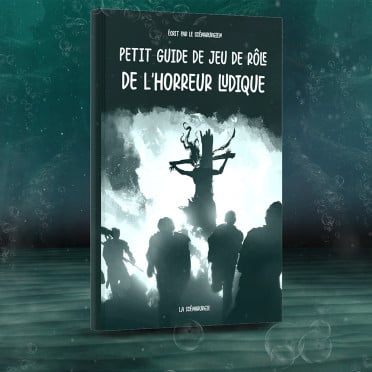Sold and shipped by :
Le Scénarurgien
your order will be shipped on 29 Apr 2025
Horror is a genre I've always loved for its ability to create a strong emotion (fear) out of something that is commonly accepted as fictitious, when in fact this same emotion is a natural response to very real threats. How can we ‘trick’ our brains into believing that this hideous monster seen on a screen or described around a table represents a threat to our physical integrity and that we must at all costs activate the emergency biological processes to get away from it?
Paradoxical as it may seem, Horror is a game about ourselves that says a lot about us as human beings, but also about us as individuals in our own right. It's a game in which we tickle our natural survival reflexes and try out how far we can go to recapture, if only for a moment, that ‘raw’ emotion that normally only kicks in when we're faced with a very real threat. But this game is not without danger, because like any stress imposed on an organism, if it is badly measured or repeated too often, it can very quickly leave indelible marks that go far beyond the stage of simple, benign fun.
So how do you play with an emotion as strong as fear while remaining within the healthy limits of the game? Without sanitising the story you want your players to experience? That's precisely what this book is about: the little role-playing guide to playful horror.
Paradoxical as it may seem, Horror is a game about ourselves that says a lot about us as human beings, but also about us as individuals in our own right. It's a game in which we tickle our natural survival reflexes and try out how far we can go to recapture, if only for a moment, that ‘raw’ emotion that normally only kicks in when we're faced with a very real threat. But this game is not without danger, because like any stress imposed on an organism, if it is badly measured or repeated too often, it can very quickly leave indelible marks that go far beyond the stage of simple, benign fun.
So how do you play with an emotion as strong as fear while remaining within the healthy limits of the game? Without sanitising the story you want your players to experience? That's precisely what this book is about: the little role-playing guide to playful horror.
Product Family
Copyright © 2025 www.philibertnet.com Legals - Privacy Policy - Cookie Preferences - Sitemap







